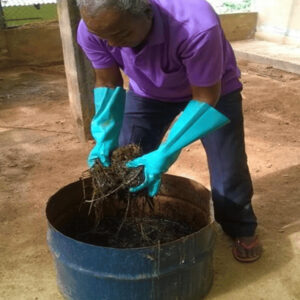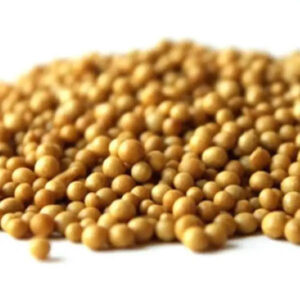Fertilizer Management
Optimum growth and yields can be achieved only by proper balancing of the nutrients according to the need of the rubber plant. The nutrients deficient in most rubber growing soils in Sri Lanka are nitrogen (N), phosphorus (P), potassium (K) and magnesium (Mg). However, these deficiencies could easily be corrected by applying inorganic fertilizers in correct proportions and quantities.
| Fertilizer | Abbreviation | N % | P2O5 % | K2O % | MgO % |
|---|---|---|---|---|---|
| Urea | U | 46 | |||
| Sulfate of Ammonia | SA | 21 | |||
| Di ammonium Phosphate | DAP | 18 | 46 | ||
| Imported Rock Phosphate | IRP | 28.5 | |||
| Eppawala Rock Phosphate | ERP | 30 | |||
| High grade ERP | HERP | 38.5 | |||
| Muriate of Potash | MOP | 60 | |||
| Sulphate of Potash | SOP | 48 | |||
| Dolomite | DOL | 20 | |||
| Kieserite | KIES | 24 | |||
| Commercial Epsom Salt | CES | 16 |
Application Timing
Fertilizer application should be timed according to the rubber tree’s growth cycle. During the early stages of growth, trees need more N for vegetative development. As they mature, the demand for K increases, especially during the latex production phase. The timing of fertilizer application should align with the monsoon seasons to ensure the nutrients are available when the trees need them most. Applying fertilizers before the rainy season ensures that the nutrients will be absorbed into the soil when the tree’s growth is most active.
Techniques for Fertilizer Efficiency
Efficient fertilizer use is essential for maximizing the benefits of nutrient applications while minimizing waste. Band placement involves placing fertilizers in concentrated bands near the root zone, which helps reduce nutrient loss and improves nutrient uptake. Foliar feeding, where nutrients are sprayed directly onto the leaves, is another technique that can provide immediate access to essential minerals, especially when the soil is not responsive. Slow-release fertilizers are also an effective way to ensure that nutrients are available to the tree over an extended period, reducing the need for frequent applications and minimizing environmental impact.
Other fertilizer applications
- Fertilizer Encapsulated Coir Bricks
- “Shaka Sara” Liquid Organic Fertilizer
- Biochar application for immature rubber
- Slow release fertilizers for rubber nursery plants
Fertilizer Encapsulated Coir Bricks
It was developed for immature rubber plants to maximize fertilizer use efficiency and minimize wastage.
Benefits:
- Only one application per year
- Reduce labor cost associated with fertilizer application by 75%
- Minimize fertilizer wastage and thereby reduce environmental pollution
- Maximize fertilizer use efficiency
- Valuable product from cheap industrial waste material

“Shaka Sara” Liquid Organic Fertilizer
It was developed by using freely available organic materials: green manure, farm yard manure, crop residues, locally available ERP and Dolomite.
Benefits:
- Environmental friendly, economically viable organic fertilizer
- Most suitable for low growth immature rubber plants
- Improve soil fertility and inorganic fertilizer use efficiency

Biochar application for immature rubber
Biochar: 70-80% stable carbon, highly porous, high specific surface area, high specific charge density, alkaline pH & rich in plant available nutrients
Properties of biochar varied with the source material and conditions provided by the pyrolysis process
Benefits:
- Enhance soil fertility by increasing CEC, OC, pH buffer capacity, microbial activity, available nutrients.
- Increase crop growth

Slow release fertilizers for rubber nursery plants
Application of slow release fertilizers for rubber nursery plants was observed more benefits compared to other conventional fertilizer application.
Benefits:
- Only one fertilizer application for the total nursery stage
- Minimize the labor cost
- Minimize fertilizer wastage and environmental pollution
- Maximize fertilizer use efficiency
- Preparation of healthy planting material at the end of 6 months

